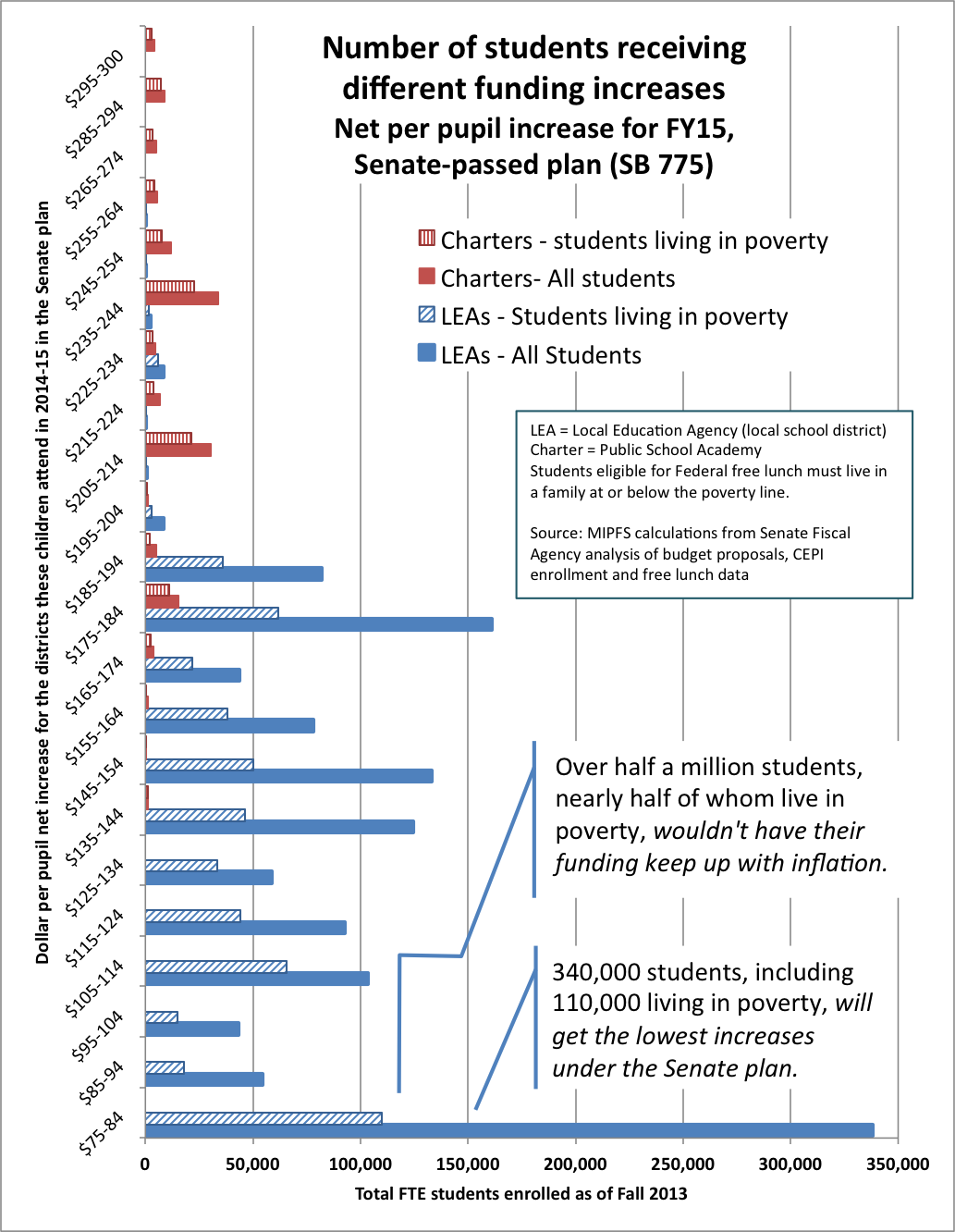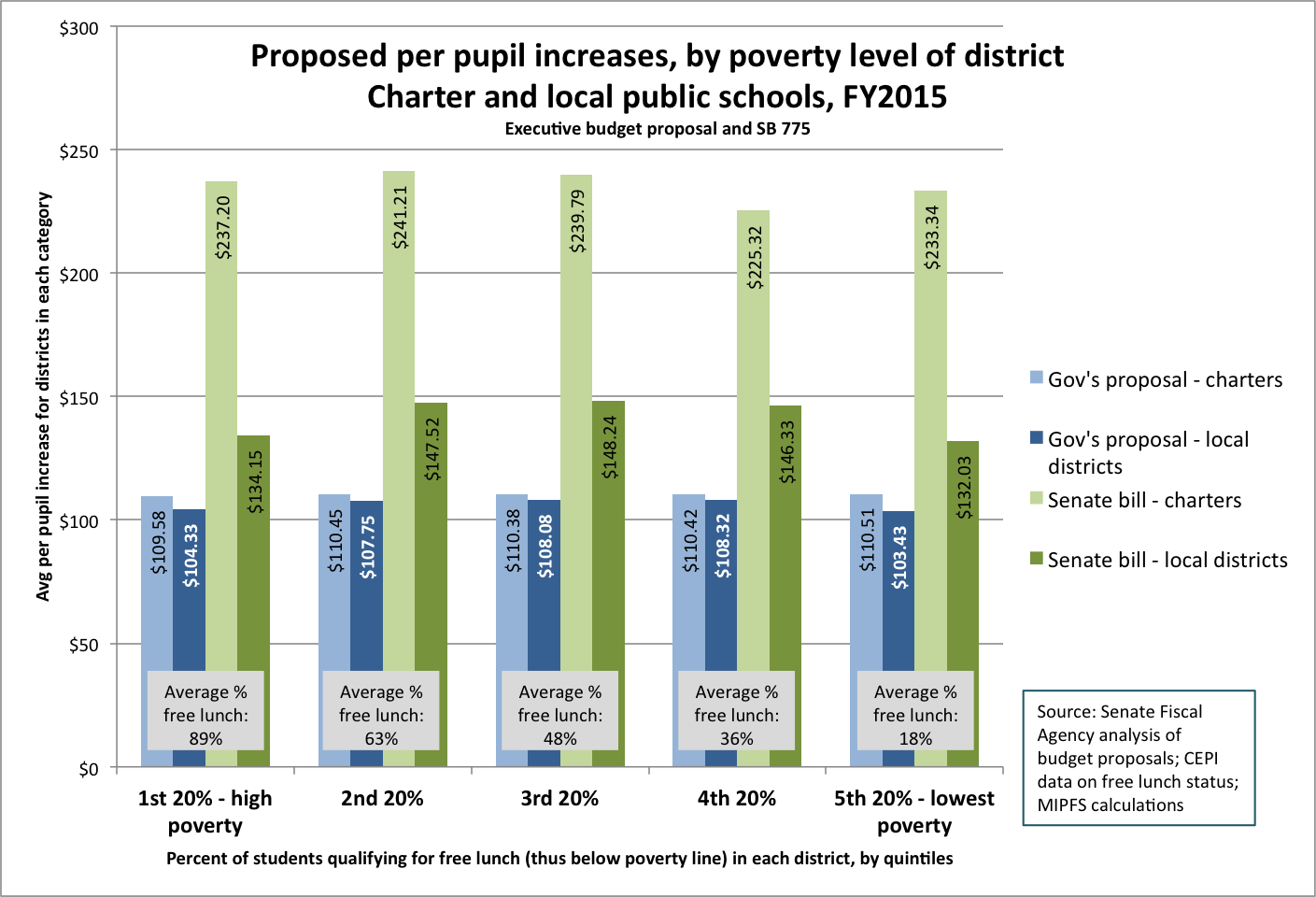School aid budget in pictures
| Attachment | Size |
|---|---|
| 217.09 KB |
What they're looking at in the smoke filled rooms
Now that the state's top economists have painted a somewhat less flush picture for next year, Legislative leaders are sitting down and hammering out final budget numbers. You won't get to watch - this is all happening in the proverbial "smoke-filled rooms" where the key players wheel and deal. And while the budget bills are technically in "conference committee," where bipartisan nominees of both houses work out their differences, we won't get to see the final product until those committees meet for the first time - usually for just a few minutes. All the real negotiations will have been concluded by then.
So what are we likely to get? Some earlier articles outline the Governor's proposed school aid budget, and each house passed their own version. On the surface, the Governor's appeared to be the least generous, while the Senate trumpeted per pupil increases of up to $300 per pupil. But is everything as it seems? The fact that all three proposals spend nearly identical amounts of money should be our clue that the devil is in the details.
In our presentation on school funding to the State Board of Education (see upcoming article), we argued that legitimate school funding models would need to:
- be fair, or equitable, to all participants (though that doesn't necessarily mean equal),
- provide adequate resources for schools to do what we ask of them, and
- put resources where they were most needed.
How do the budget proposals do on these scores? Not so well. A picture is worth a thousand words.

[Charts are available as a PDF attached to this article.] While the Senate bill is indeed somewhat more generous than the Governor's proposal, that generosity is tilted quite sharply toward charter schools and away from local school districts. Mostly, this is the result of the Senate moving money which the Governor had earmarked to pay costs of the state school pension system over to regular per-pupil funding. Local school districts, which must participate in the pension system, still have those costs - which undercuts the increase of the Senate plan. Nearly all charter schools exclude themselves from the pension system, so they get the full amount of the funding increase.
Quick aside on pensions: All public school employees are covered by the state public school employee pension system (MPSERS), which is run by the state and under the control of the Legislature. Until recently, local districts had to pay their share - recently as high as 25% of their payroll expenses - out of their per pupil funding. Employees also have to pay into the system out of their own earnings. However, most charter schools do not directly employ anyone but instead contract those services out, meaning that they are not part of the pension system (and do not share in the costs). With changes made in the pension system in 2012, the amount school districts were required to chip in was "capped" at about 21%, with the remaining amount, as much as 6%, covered by the state. However, the state's "contribution" is simply taken out of the school aid fund before money is divided among districts. So students, their schools, and current staff continue to bear the rising costs of the pension system.
So, pensions aside, why is the Senate plan still more generous to local districts? Mainly because the Senate bill rolls into foundation allowance funding a number of special-purpose line items, including existing "best practices" and "student performance" awards which could total up to $152 per pupil for districts which qualified. However, relatively few districts qualified for the full amount, meaning that spreading that money across all districts would pump up the average increase. The Senate bill has language to guarantee that every district sees at least a $75 increase after all the changes are taken into account. As we will see, a large number of districts, educating hundreds of thousands of students, would only get that minimum amount.
Here's another take on equity: how many students are benefiting from funding increases, and how much? The chart above shows the averages across districts, but districts can have tens of thousands of students or just a few hundred (each charter school is technically its own district). But where are the students? Moreover, where are the students who are most at risk? Students living in poverty bring heavy burdens with them to school, and earmarked Federal funding is simply not adequate to meet the need. Shouldn't we be putting resources where they are most needed?
In fact, the Senate bill would give minimum increases to districts responsible for over 340,000 students, of which some 110,000 are living below the poverty line:

The vertical bars represent numbers of students. Clearly, things are pretty skewed. In the Senate proposal, a large plurality of the state's 1.47 million students and a plurality of those living in poverty are in districts receiving the lowest possible increase. Virtually all students in local public schools are getting less than 65% of the vaunted maximum increase of $300 per pupil. Charter schools do considerably better, though charter students living in poverty are unlikely to benefit from the maximum increase either. In general, the largest increases (right side of graph) are going almost exclusively to charter schools which serve a small fraction of the state's students.
Is this fair? Does this put resources where they are most needed?
Another way to look at how students living in poverty fare under the proposals is to see the average net increase for districts with various percentages of students living in poverty. (We don't treat special education here, because data is not completely available and because a substantial proportion of special education expenses are reimbursed. However, districts must bear the unreimbursed costs, and special education needs tend to track with poverty levels.) Districts with high levels of poverty are not receiving the largest increases:

Here, districts are grouped by their percentage of students qualifying for free lunch. In both the Governor's and the Senate's proposals, the highest-poverty 20% of local districts get an average increase that is the second lowest of all groups. Among charters, the Governor's proposal gives the highest-poverty group the lowest increase, while the Senate plan puts them in the middle. Clearly visible here is the significant tilt to charter schools in the Senate proposal. In any case, districts with the highest needs are generally receiving among the lowest increases in both plans.
What to do?
- If everyone wants a truly level playing field, state pension system costs (MPSERS) should be covered separately by the state rather than funded from the School Aid Fund - in particular, we must stop forcing local districts to give back some 20% of their funding to the pension system. Then, per pupil funding will actually go to kids in classrooms.
- Current state support earmarked for students living in poverty has never been funded at promised levels, and the total spending has stagnated as the number of children living in poverty has mushroomed. This support should be fully funded and should be available to all districts and charters for targeted services.
- Special education costs, though mandated by Federal and State law, are not fully reimbursed. They should be, so that schools do not have to make a choice between fulfilling their legal and moral obligations to special needs students and maintaining general education programming.
- Finally, funding levels must be sufficient for schools to do the jobs we assign to them. Right now, we don't even have a handle on what that cost would be. We do know that schools have taken huge funding hits over the last few years, which are far from being recovered. At the very minimum, funding levels must keep up with inflation. To match projected inflation, districts at the current minimum funding level of $7,076 would need to receive an extra $113 per pupil. More than half a million students attend districts which would not even get that amount. Under these plans, most districts would still lose ground to inflation, further eroding their available resources.
It can be done, and the economic resources are there. All we need is for our policymakers to show some leadership and backbone on behalf of the children of our state.
- Log in to post comments
